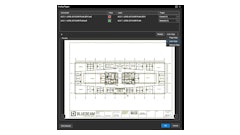
The used electric vehicle (EV) market is struggling to solve the important problem of accurately estimating battery health data. Assessing the health of the battery, and accurately predicting its lifetime and value are all critical to the pricing of a used vehicle, given that the battery is a major cost factor for an EV. However, this assessment is contingent on several factors: weather conditions, charging patterns, driving behaviors, and sometimes minor manufacturing defects.
Without an accurate read on the health of the battery, secondary buyers tend to drive down the cost of used EVs. Naturally, this has an impact on sellers of all persuasions: auction houses, rental companies and dealers of commercial vehicles selling or leasing battery-powered equipment.
Advanced lithium battery solutions used for forklifts offer highly developed and nuanced data capabilities. Fleet managers can gain detailed insight into their forklift batteries, making reporting and predicting more streamlined and more automated than it’s ever been.
How the EV Market is Solving This Problem
As it turns out, the demand for reliable and accurate battery data gave a few start-ups an idea for a business, as this data is key to determining the value of used EVs.
Recurrent gathers data from 45 different makes and models of EVs. Over 10,000 cars share data daily using onboard data collection technology. Recurrent is able to use this data to determine odometer readings, the age of the vehicle, as well as the climate where the vehicle has been operated. This data is used to estimate the battery’s lifespan in contrast to manufacturer estimates.
Cox Automotive Inc. is another company that’s heavily invested in battery health diagnostics and their acquisition of Spiers New Technologies speaks volumes to this. Spiers New Technologies offers EV battery lifecycle management services, which includes reuse, repair, recycling, and battery analytics.
The EV market still has ground to cover, however, because navigating the uncertainties of battery life depends on the availability and relevance of data. At present, companies like Recurrent have more data on common vehicles being used in common locations versus uncommon vehicles being used in uncommon locations.
Charging behaviors are also a key factor, but the availability of this data depends on whether drivers agree to allow it to be tracked. As a result, this type of data could take longer to collect.
Track and Collect Dozens of Data Points on Every Battery
Battery management systems allow you to collect dozens of data points on your entire battery inventory. This makes the process of managing your batteries simple. You can check battery health, how one battery performs compared to the others, and how long they are at work from a single, convenient, central dashboard.
Technicians must be trained to connect to the BMS interface and perform maintenance. Fortunately, wireless battery systems aren’t complicated. With all batteries connected to one platform, you can check up on the performance of your entire lift truck fleet from an online dashboard.
Many potential battery performance issues can be solved remotely, without a technician’s physical presence at the site.
Fundamentally, if battery monitoring can be improved, then the value of a used EV can be more accurately measured. If you have accurate and predictable data points you can cite, it can reassure secondary buyers about their investment, and add transparency and trust to the secondary EV market.
The solution only gets better with time, as experience and data continue to accumulate, making it possible to predict the value of an EV battery with high accuracy.






























